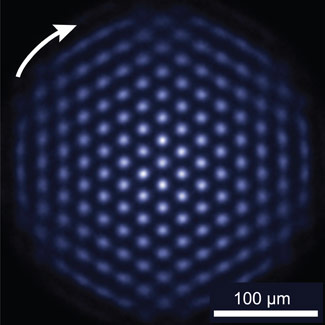Computation in out-of-equilibrium quantum systems

The idea of using quantum mechanics to perform some computation much faster than with known classical algorithms originates from the eighties. The most straightforward method for that would be to build a general-purpose programmable quantum computer. Even though we are now able to manipulate simple quantum systems with an unprecedented level of control, building a fully controlled complex system such as a quantum computer, will be a challenging task of the 21st century. However, it is possible to benefit from the power of quantum mechanics on complex out-of-equilibrium systems by giving up some control. Those systems are called quantum simulators, and can be seen as quantum analog computers that are built for a specific task.
The simplest out-of-equilibrium states that those simulators can have are the non-equilibrium steady states. Those states might, at first sight, look like equilibrium ones, but they allow the emergence of new phenomena, such as time crystals or adiabatic pumps. On the other hand, if one wants to realize a quantum computer, it seems unavoidable to use quantum error-correcting codes. When those codes are at use, the state of the quantum computer on standby can be seen as a non-equilibrium steady state, since quantum error correction happens at all time to stabilize the quantum state. Computation can be seen as a transient process occurring on top of a non-equilibrium steady state.
All of this suggests to look into out-of-equilibrium matter from the computational point of view. The goal of this project is to explore the dynamics of complex quantum system and to try to harness the behavior of those systems to use them as quantum simulators.